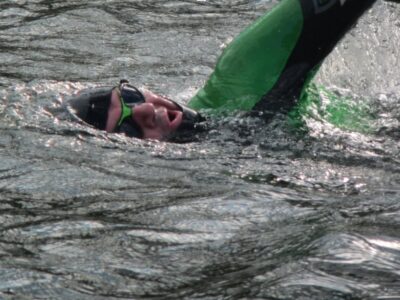
H. James Simpson, a geochemist who pioneered important studies of water pollutants in the Hudson River and abroad, died May 10. He had been affiliated with Columbia University’s Lamont-Doherty Earth Observatory for 50 years. The cause was Parkinson’s disease, said his family; he was 72.
In the 1970s, as modern environmental laws were taking hold, Simpson and his graduate student Richard Bopp began studying the transport and fate of polychlorinated biphenyls, or PCBs, in the Hudson. From 1947 through 1975, General Electric had used PCBs to make electrical equipment, leaving the river heavily contaminated with the suspected carcinogens. A collaboration between Simpson, Bopp, and a variety of graduate students continued over decades. In 1984, the U.S. Environmental Protection Agency decided to leave the PCBs in the river, but then was pressured to make a reassessment. Simpson and his colleagues helped design a program to test both water and sediment—work that was instrumental in the EPA’s 2002 decision to have GE dredge the river to remove approximately 2.9 million cubic yards of PCB-laden sediment. The dredging is still underway.
Simpson’s work on Hudson sediments also provided the first accurate accounting of radionuclides in the river stemming from nuclear-bomb testing, and from the Indian Point nuclear power plant, on the river’s banks. It established that Indian Point had been responsible for significant releases of radioactivity at a time when the issue was still being hotly debated. Simpson and his students used radionuclide dating techniques to study the movements of many other contaminants in the Hudson.
Simpson also studied atmospheric deposition of lead and other contaminants. It had been assumed that declining levels of atmospheric lead in the late 1970s and early 1980s were due to the recent introduction of unleaded gasoline. But sediment cores Simpson took from New York’s Central Park Lake revealed that high levels of lead and other metals had been deposited through most of the 20th century. This suggested that the contaminants had been largely the result of earlier widespread use of solid waste incinerators, not motor vehicles.
At Columbia, Simpson was seen as pivotal in creating a connection between earth sciences and public health. In the early 1990s, he fostered collaborations between Lamont-Doherty geochemists and researchers at the university’s Mailman School of Public Health, helping to create the Center for Environmental Health in Northern Manhattan.
In the mid-1990s, scientists found that millions of shallow wells drilled in Bangladesh and other southeast Asian countries to provide clean water were instead poisoning people with naturally occurring arsenic—perhaps the largest mass poisoning in history. In 1998, Simpson persuaded Joseph Graziano of the Mailman School to collaborate on the crisis. Within a few weeks, they were on a plane to Bangladesh to gather data. They quickly launched what has since evolved into a long-running series of research projects by a variety of researchers into the geologic origins and mechanisms of arsenic in groundwater, and its health effects. The projects, still underway, have expanded into New Jersey and Maine, where some areas suffer similar problems.
Along with colleagues and students, starting in the mid-1990s, Simpson also studied the ecosystem of the Black Rock Forest in the Hudson Highlands. The Black Rock Forest Consortium, which maintains the forest for research and education, continues to build on his work.
Harry James Simpson was born in the lead-mining town of Bonne Terre, Missouri, on March 18, 1943. His father worked as a mining engineer; his mother was a public-school teacher.
Simpson received his B.S. in chemistry at Caltech in 1965, winning honors for his research. As a graduate student at Lamont-Doherty from 1965 to 1970, he earned his Ph.D. under geochemist Wallace Broecker, who is now considered one of the world’s leading climate scientists.
Simpson met his wife, the former Kim Farley, at a Yale-Columbia football game. After marrying, they spent a year in Hawaii, where Simpson did postdoctoral work on aerosol chemistry at the National Oceanic and Atmospheric Administration’s mountaintop Mauna Loa Observatory. In 1971, Simpson returned to Columbia and moved to Nyack, N.Y., near the Lamont–Doherty campus. He was promoted to full professor in 1982, and chaired what is now the Department of Earth and Environmental Sciences from 1986 to 1989. During his career, he also did research in Egypt, Italy and Australia. Simpson became a professor emeritus in 2008.
Simpson’s concern for the environment extended to his personal life. In the old house they lived in, he made the south side into a solar collector, with gallon plastic water containers suspended from the basement ceiling for heat storage. Simpson was interested not only in science, but also in poetry, music and history. “He knew everything about some things and something about just about everything,” said his wife. “He was a true scholar who believed in the importance of knowledge and rational thinking. He cared very much about using his science to make the world a better place.”
Simpson taught many undergraduate and graduate classes, often across disciplines. He became a favorite of both students and other faculty, known as a tough editor who would cover manuscripts with red ink anywhere he thought language had to be more exact, or arguments better made. Students always found him available to talk about any aspect of life, often with a tall thermos of tea in hand. Alison Keimowitz, his graduate student from 2001 to 2006, and now a professor at Vassar College, recalled, “There was this sense that he was never too busy, that he was in it for his students,” she said. “I always felt his primary mission was to keep his students moving in the right direction and growing. He was really someone special.”
Along with his wife, Simpson is survived by his younger sister, Martha Sue Simpson; his daughter, Julie Simpson, a neurobiologist soon to move to the University of California, Santa Barbara; and two grandsons.



